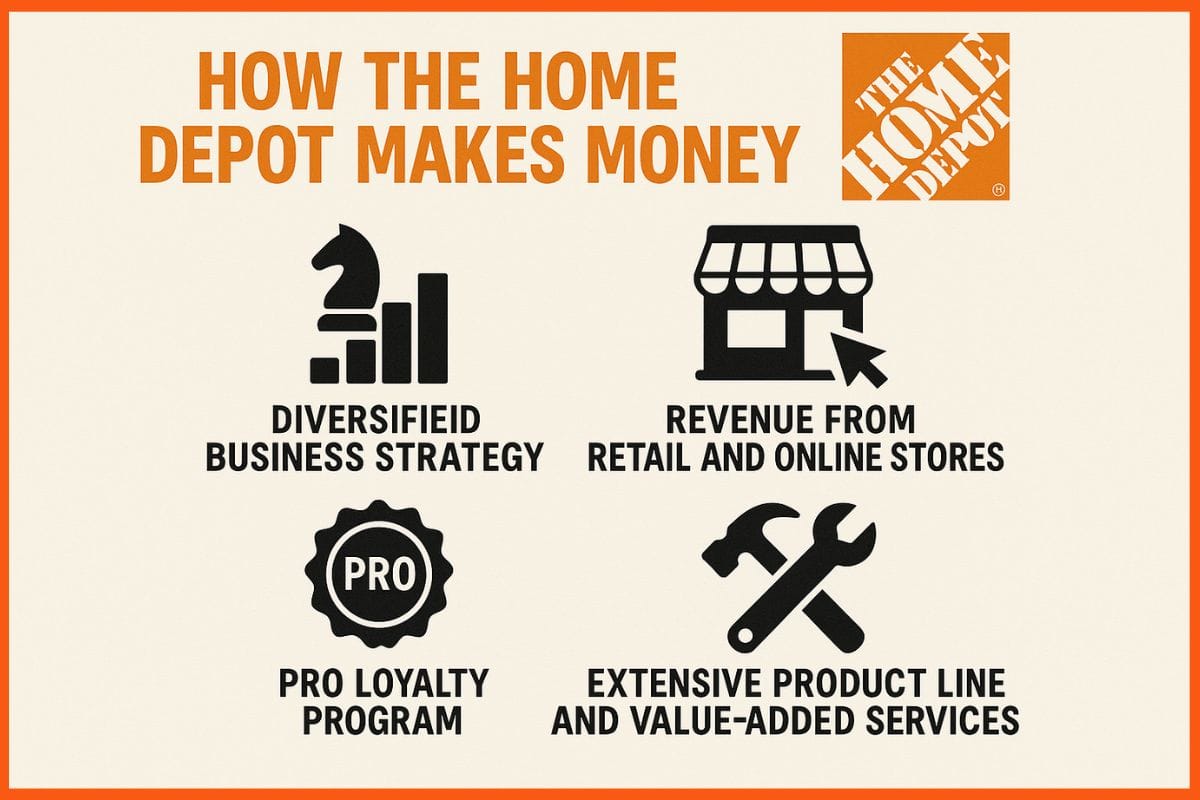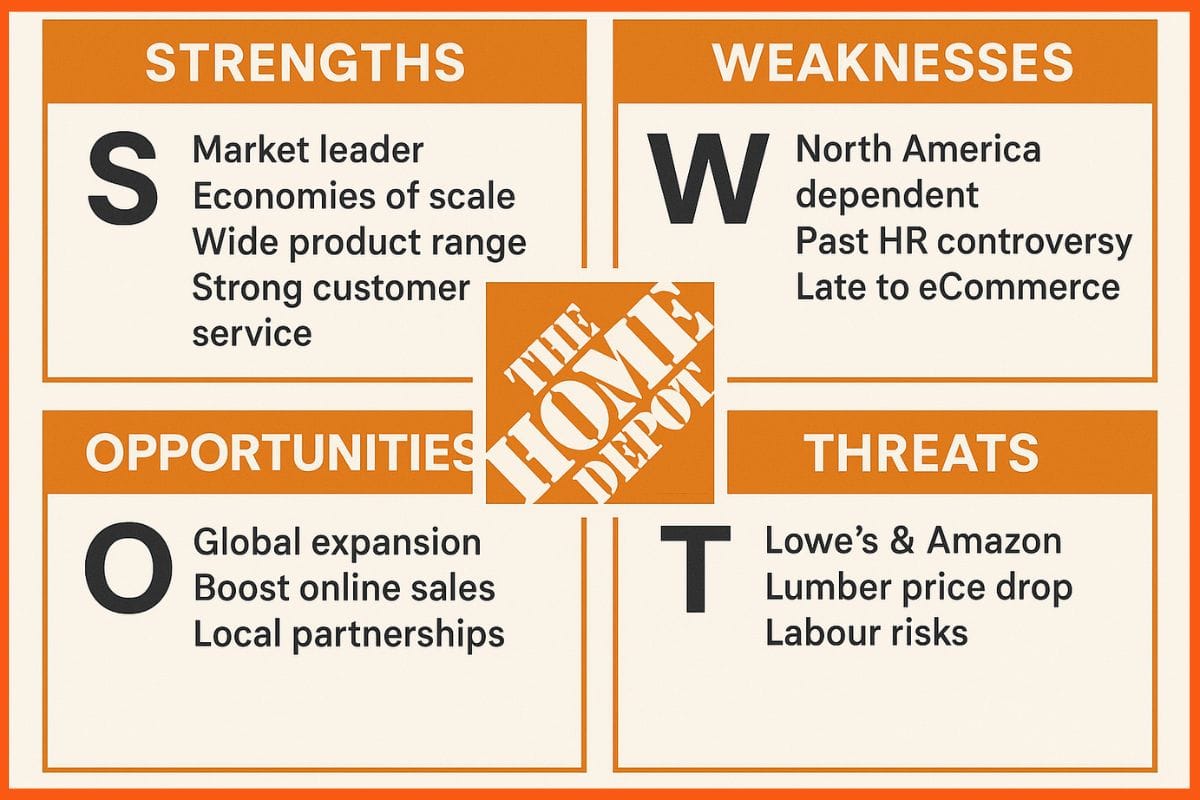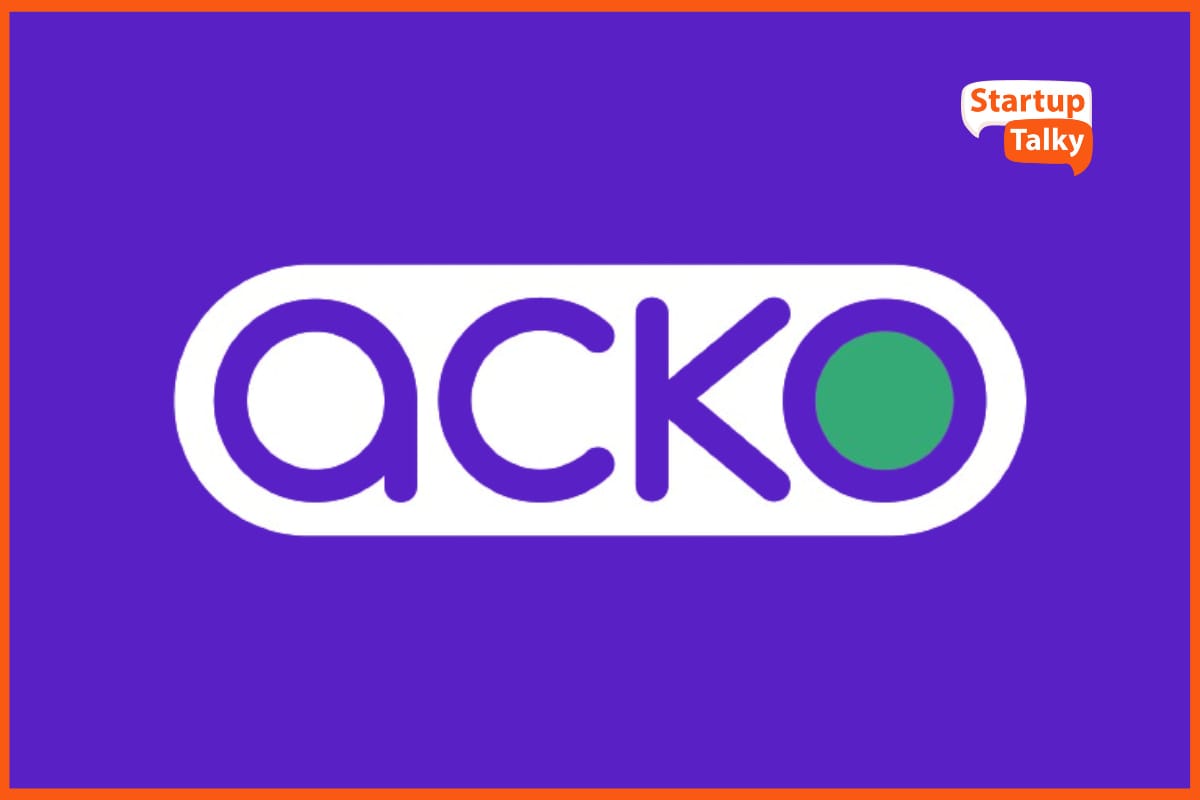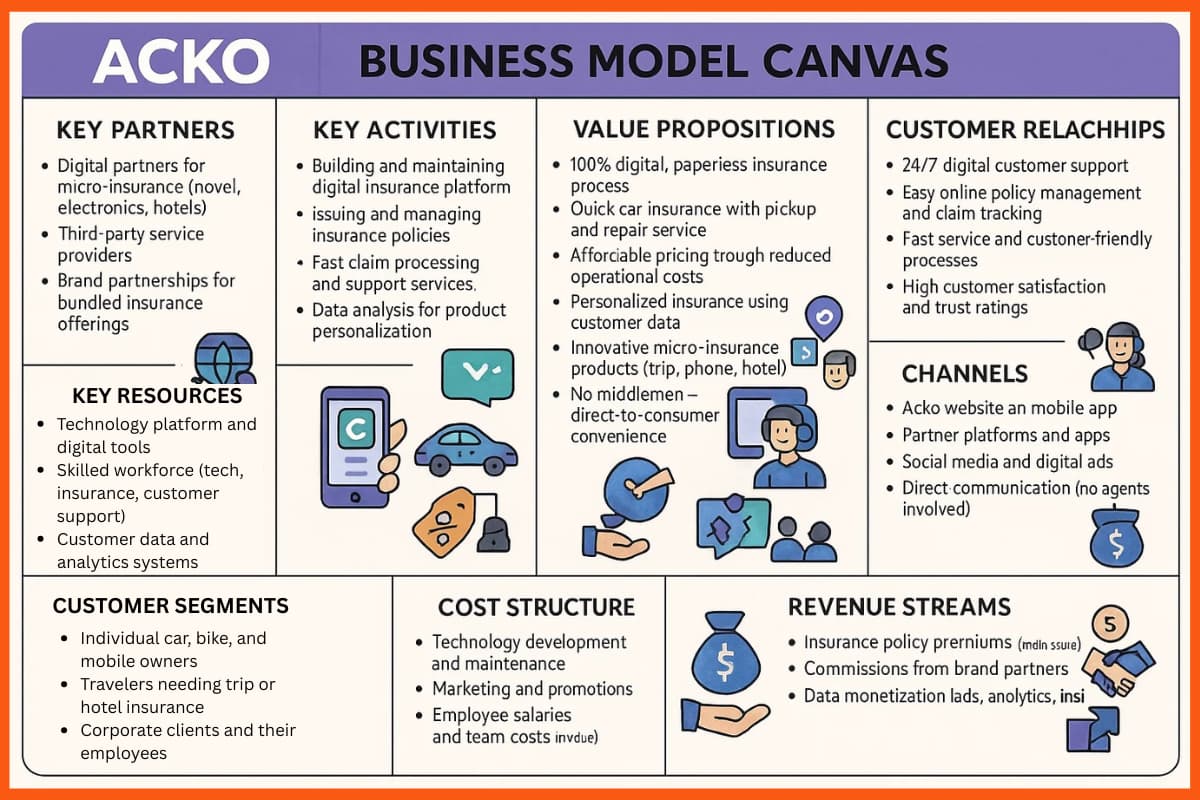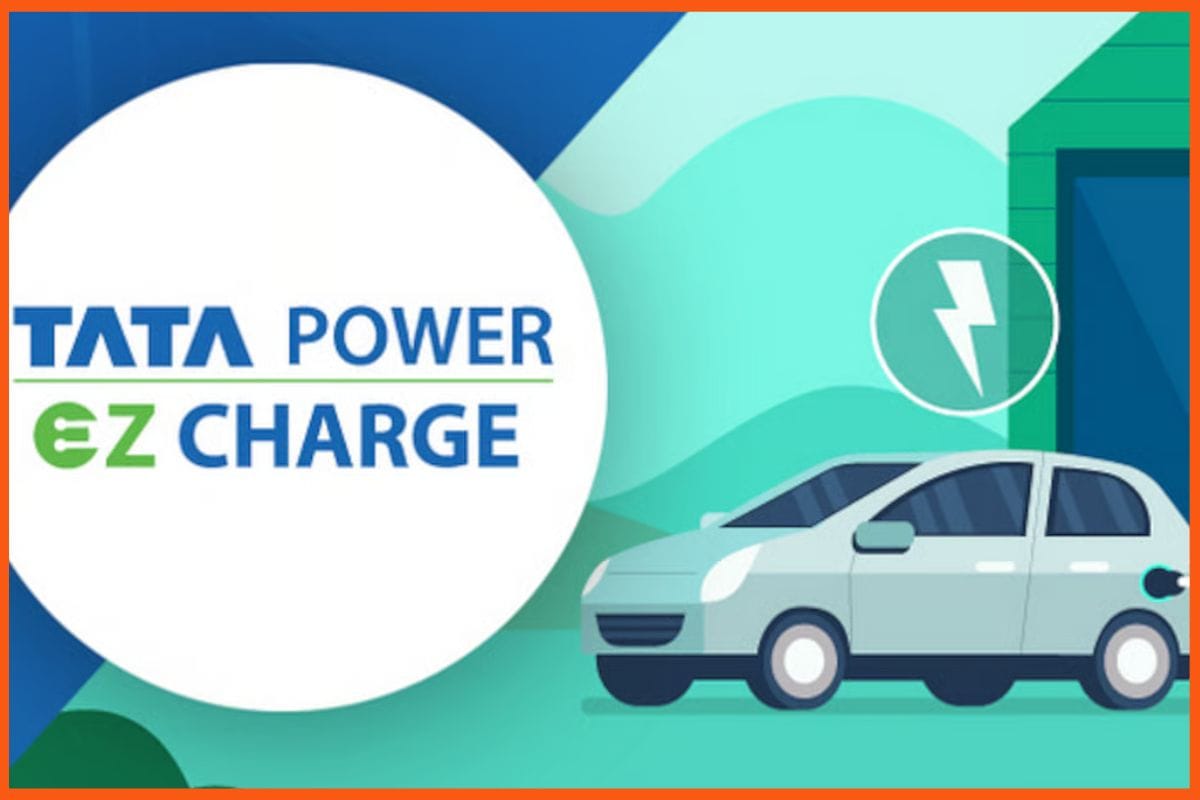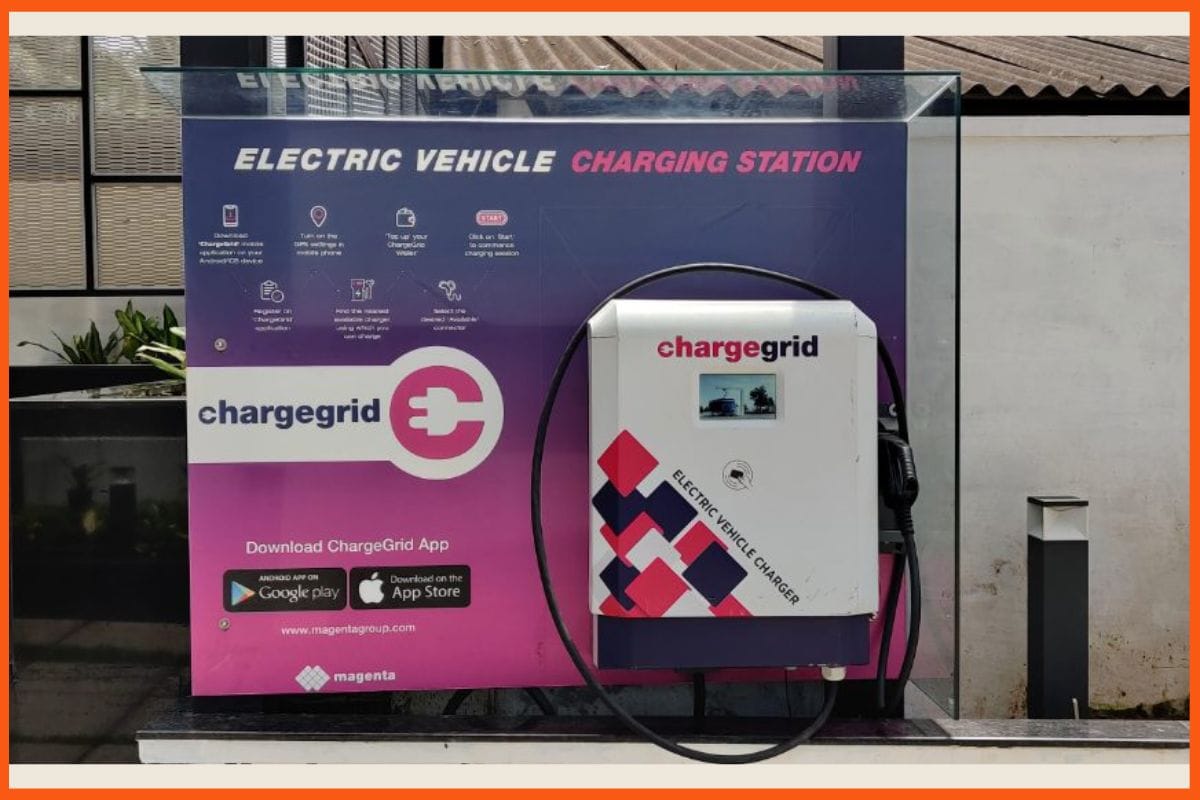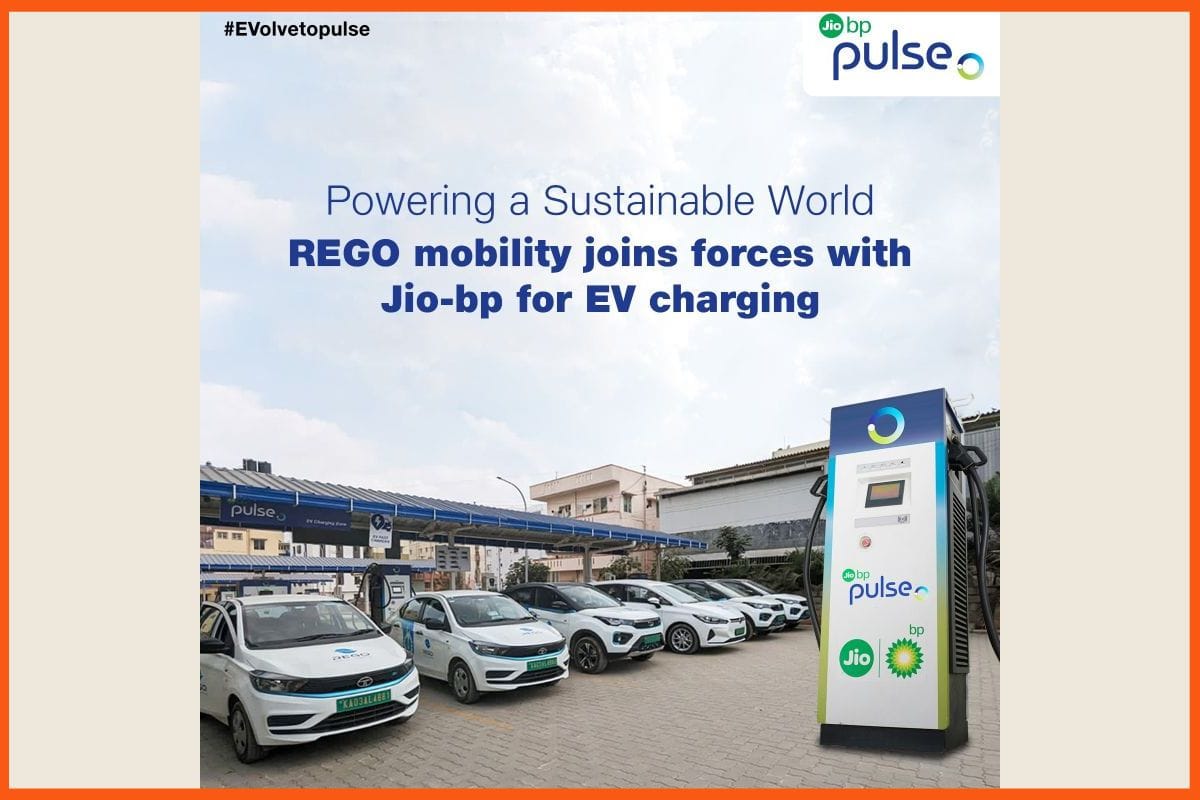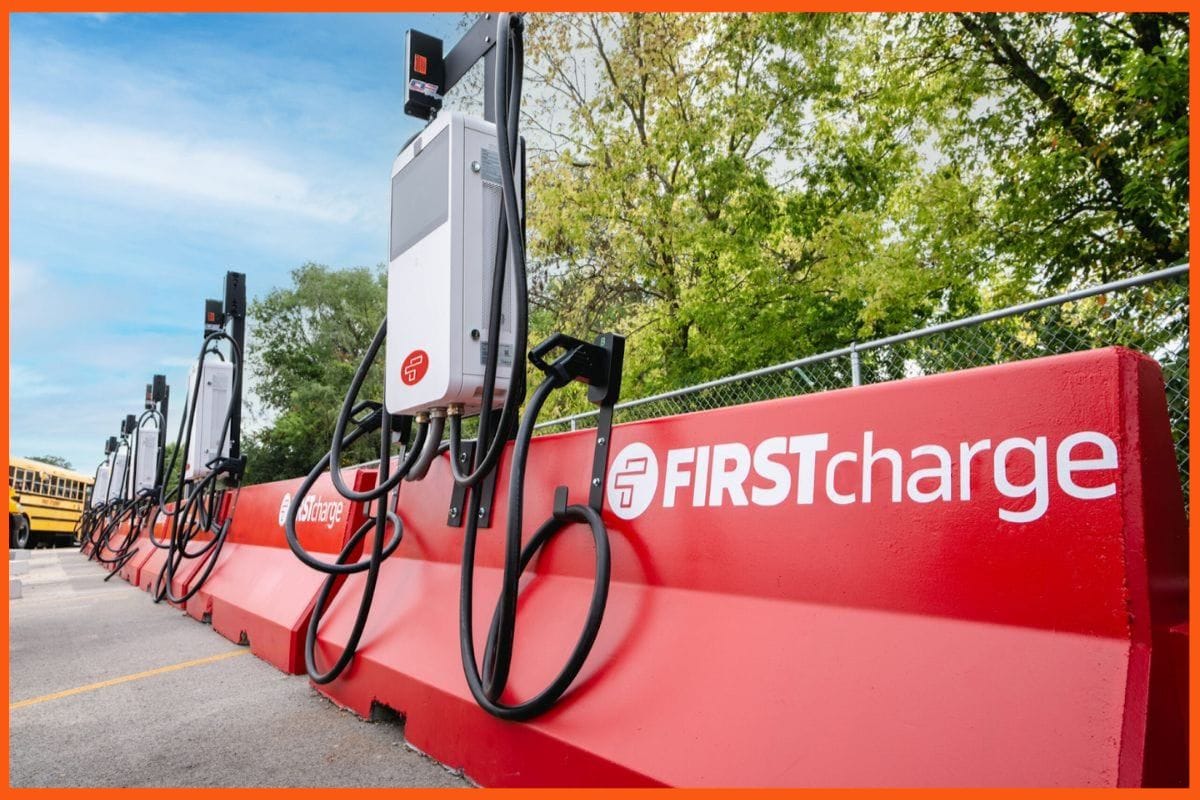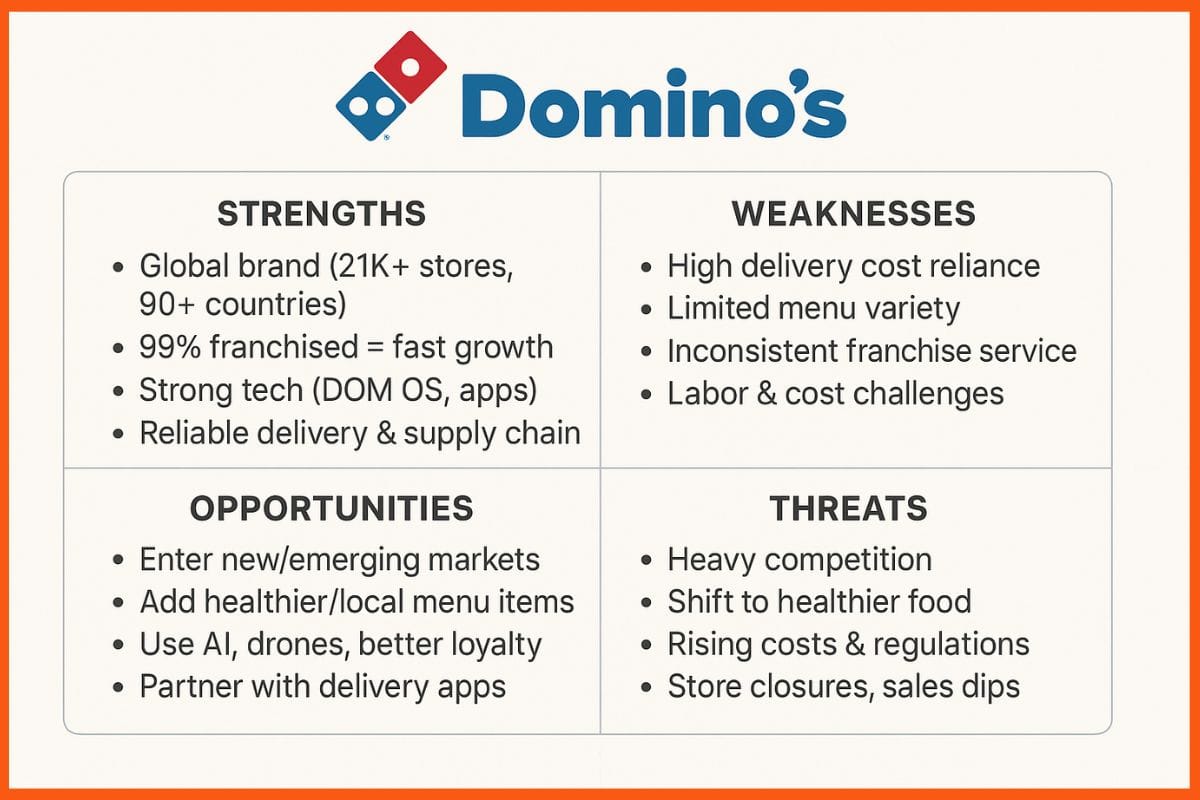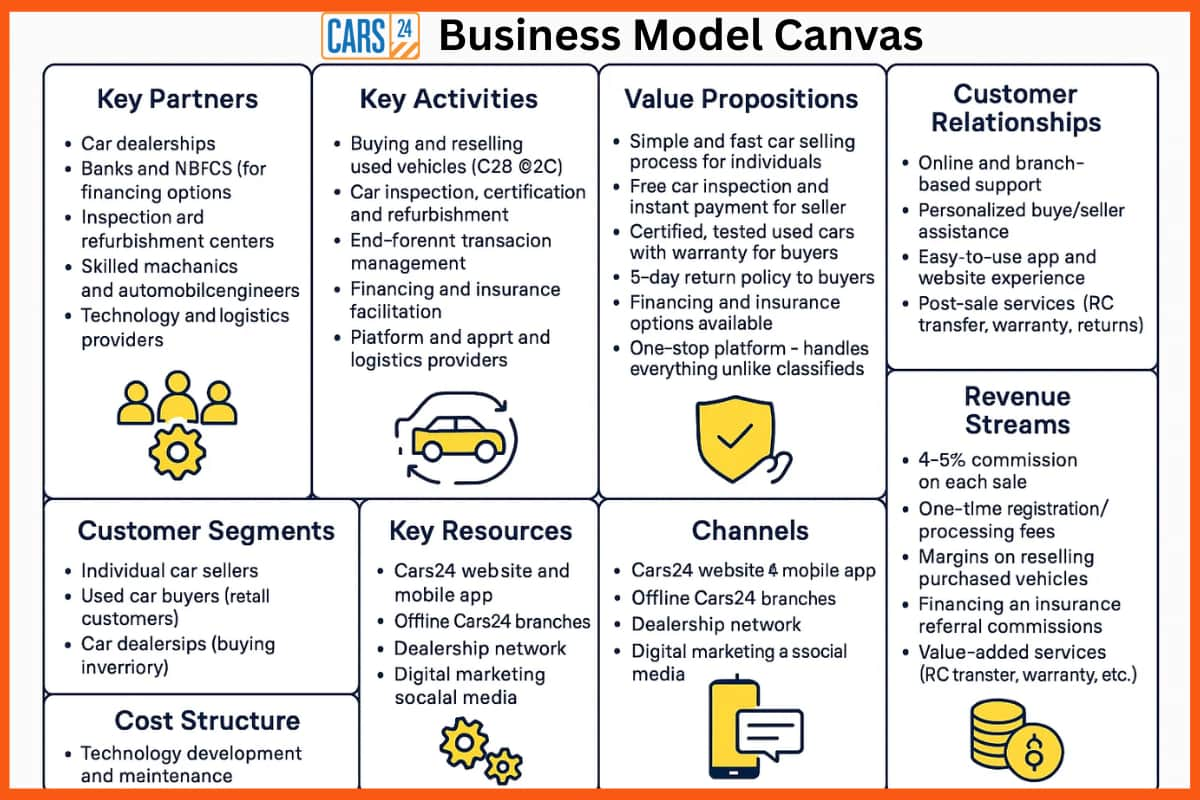The automotive industry was an epicenter of activity with profitable prospects in 2008. In an attempt to capitalise on the excitement, everyone joined the party and opened their own auto dealerships or companies.
Nevertheless, a significant gap was present in the midst of the frenzy: a dearth of unbiased, transparent, and dependable information regarding automobiles. CarDekho identified this need and began with a straightforward yet ingenious business plan by giving customers accurate and trustworthy vehicle information.
Let’s take an intriguing tour of the CarDekho business model’s many components to encourage aspiring young entrepreneurs to investigate comparable complex opportunities-
About CarDekho
CarDekho Business Model
How CarDekho Makes Money | CarDekho Revenue Model
USP of CarDekho
SWOT Analysis of CarDekho
About CarDekho

Two brothers, Amit and Anurag Jain (CarDekho founders), came up with the bright concept to launch CarDekho.com in 2008 as a one-stop shop for everything related to cars. It began modestly, resembling a car guidebook. CarDekho.com quickly grew as more people visited it, adding professional reviews, vehicle prices, and buying/selling advice. With its headquarters located in Jaipur, CarDekho has footprints in India, Indonesia, Malaysia, and the Philippines.

CarDekho Business Model
The main purpose of CarDekho’s introduction was to provide a comprehensive and open source of information about cars. With all the clear and objective information on the car, greatly aids potential buyers and increases CarDekho’s credibility and trustworthiness.
CarDekho helps consumers find the answers to their automobile-related questions by providing thorough information about a variety of cars, which ultimately helps them select the best car for their requirements. Currently, CarDekho runs a number of well-known Indian auto portals, including PowerDrift.com, Gaadi.com, ZigWheels.com, BikeDekho.com, and CarDekho.com. Customers can sell their used automobiles at its CarDekho Gaadi stores, and they can purchase used cars at its CarDekho Gaadi Trust Mark Stores.
CarDekho Business Model Canvas
CarDekho is a leading online platform in India that helps users buy, sell, and research cars. It offers detailed car reviews, price comparisons, and connects users with dealers, lenders, and insurers. Below is the Business Model Canvas that outlines how CarDekho creates, delivers, and captures value:

1. Key Partners
- Car manufacturers and dealerships
- Insurance companies
- Loan/finance providers
- Affiliate partners (accessories, warranty)
- Content creators and influencers
2. Key Activities
- Listing cars and comparing prices
- Generating leads for dealers
- Certifying and inspecting used cars
- Creating automotive content (reviews/videos)
- Running Gaadi stores (buy/sell used cars)
- Managing subscriptions (CarDekho Plus)
3. Value Propositions
- All-in-one platform for buying/selling cars
- Verified and detailed car information
- Easy connection with top local dealers
- Car financing, insurance, and accessories support
- Certified used cars with trust and transparency
4. Customer Relationships
- Online support via chat or call
- Social media and YouTube engagement
- Personalized tools (car matcher, recommendations)
- Loyalty via CarDekho Plus subscription
5. Customer Segments
- New and used car buyers
- People selling their used cars
- Car dealers and manufacturers
- Auto enthusiasts and video viewers
- Customers seeking loans, insurance
6. Channels
- CarDekho.com and sister sites (BikeDekho, Gaadi, etc.)
- YouTube channel (PowerDrift)
- Mobile app
- CarDekho Gaadi physical stores
- Email/SMS and digital campaigns
7. Key Resources
- Online platforms and mobile apps
- Data and analytics systems
- Gaadi Trust Mark Stores
- Tech team and content creators
- Strong brand reputation
8. Cost Structure
- Tech development and maintenance
- Marketing and advertising
- Salaries and staffing
- Video and content production
- Operating offline Gaadi stores
9. Revenue Streams
- Advertising (banners, sponsored content)
- Dealer lead generation fees
- CarDekho Plus subscription fees
- Commission from finance and insurance partners
- Used car sales through Gaadi stores

How CarDekho Makes Money | CarDekho Revenue Model

CarDekho discovered that only those who are interested in buying a car will use the website to view the models’ specifications. As a result, after gaining the trust of the public with truthful data, they also made the process of buying a car easier by connecting the prospective buyer with the local top sellers and created a profitable business model. The company makes money through various modes:
Generating Revenue Through Advertising
CarDekho gives automakers and dealerships a range of advertising choices to advertise their goods and services. The business charges for sponsored content, banners, and display adverts on its website and mobile app.
Guiding the Customers and Generating Revenue
CarDekho connects automakers and dealerships with prospective customers to create leads. Depending on the buyer’s interest and budget, the business charges a fee for each lead it generates.
Subscription Model
“CarDekho Plus,” a premium subscription plan offered by CarDekho, gives consumers access to extra perks like longer warranties, free insurance, and exclusive discounts. For this service, the business charges a fee that is renewed annually.
Partnering with Third-Party Companies
CarDekho collaborates with a number of other businesses to market their auto-related goods and services, including finance, insurance, and accessories. Every sale made via the company’s affiliate links results in a commission for the business.
The core of CarDekho’s business strategy is offering a comprehensive platform for both car buyers and sellers, in addition to other value-added services. The business is a major force in the Indian automobile sector since it makes use of its extensive network and data insights to produce income through a variety of channels.

USP of CarDekho
CarDekho is the biggest consumer-facing internet site in India, with 50 million unique visitors each month, the largest automotive social networking platform, and the top player of automotive video content, with over 3 million YouTube subscribers.
SWOT Analysis of CarDekho

CarDekho Strength
- For the first time, CarDekho reported a profit of INR 37 crore (excluding unusual items) in FY24. Compared to a loss of INR 143 crore in FY23, this was a major turnaround.
- Additionally, consolidated losses decreased to INR 340 crore from INR 562 crore in the prior fiscal year. These numbers indisputably show that the business is turning a profit again.
CarDekho Weakness
- The majority of consumers feel apprehensive about the method CarDekho uses to evaluate cars and assign a price.
- Most of the customers believe that the price they are paying is far lower than what they would have received otherwise.
CarDekho Opportunity
- Since the company has already launched its operations internationally, it can further expand its wings to other countries in order to increase its business operations.
CarDekho Threats
- Competition is getting very intense in this domain.
- With startups like Spinny signing sports icon Sachin Tendulkar to promote their brand, it is critical for CarDekho to always look for new business opportunities in order to stay ahead of the competition.
Conclusion
The success of Car Dekho can be linked to its creative business strategy, customer-focused mindset, and efficient use of technology. Amit and Anurag Jain, the company’s creators, have successfully established a distinctive online marketplace that serves the requirements of automobile buyers and sellers throughout India. Car Dekho is in a strong position to take advantage of the prospects and increase its market share as the Indian auto industry grows.
FAQ
Is CarDekho a B2B or B2C?
CarDekho operates as both B2B and B2C.
Who owns CarDekho?
CarDekho is owned by GirnarSoft, founded by Amit Jain and Anurag Jain.
What is CarDekho?
CarDekho helps users buy, sell, and compare cars, providing vehicle reviews, insurance, and financing options.
How does CarDekho make money?
CarDekho makes money through ads from car brands and dealers, lead generation fees, paid subscriptions (CarDekho Plus), commissions from loans and insurance, and used car sales at its Gaadi stores.
What are CarDekho business model revenue streams?
CarDekho’s revenue streams include advertising, lead generation fees from dealers, CarDekho Plus subscriptions, commissions from finance and insurance partners, and income from selling used cars through Gaadi stores.
Is CarDekho profitable?
Yes, CarDekho is now profitable. In FY 2024, the company posted a standalone profit of INR 37 crore (excluding exceptional items), marking its first full-year profit after an INR 143 crore loss in FY 2023. Consolidated losses also improved significantly, dropping from INR 562 crore in FY 2023 to INR 340 crore in FY 2024.



